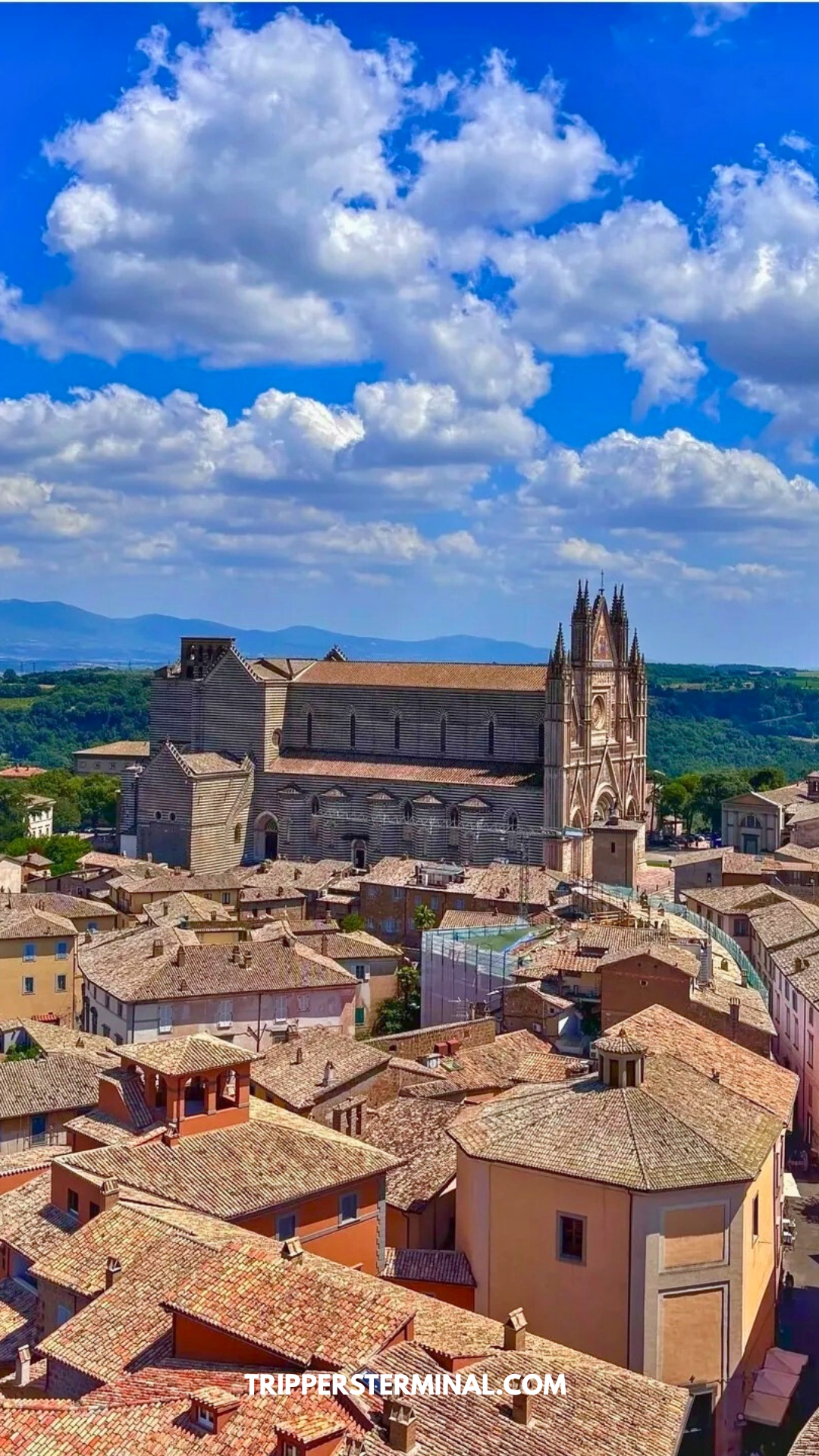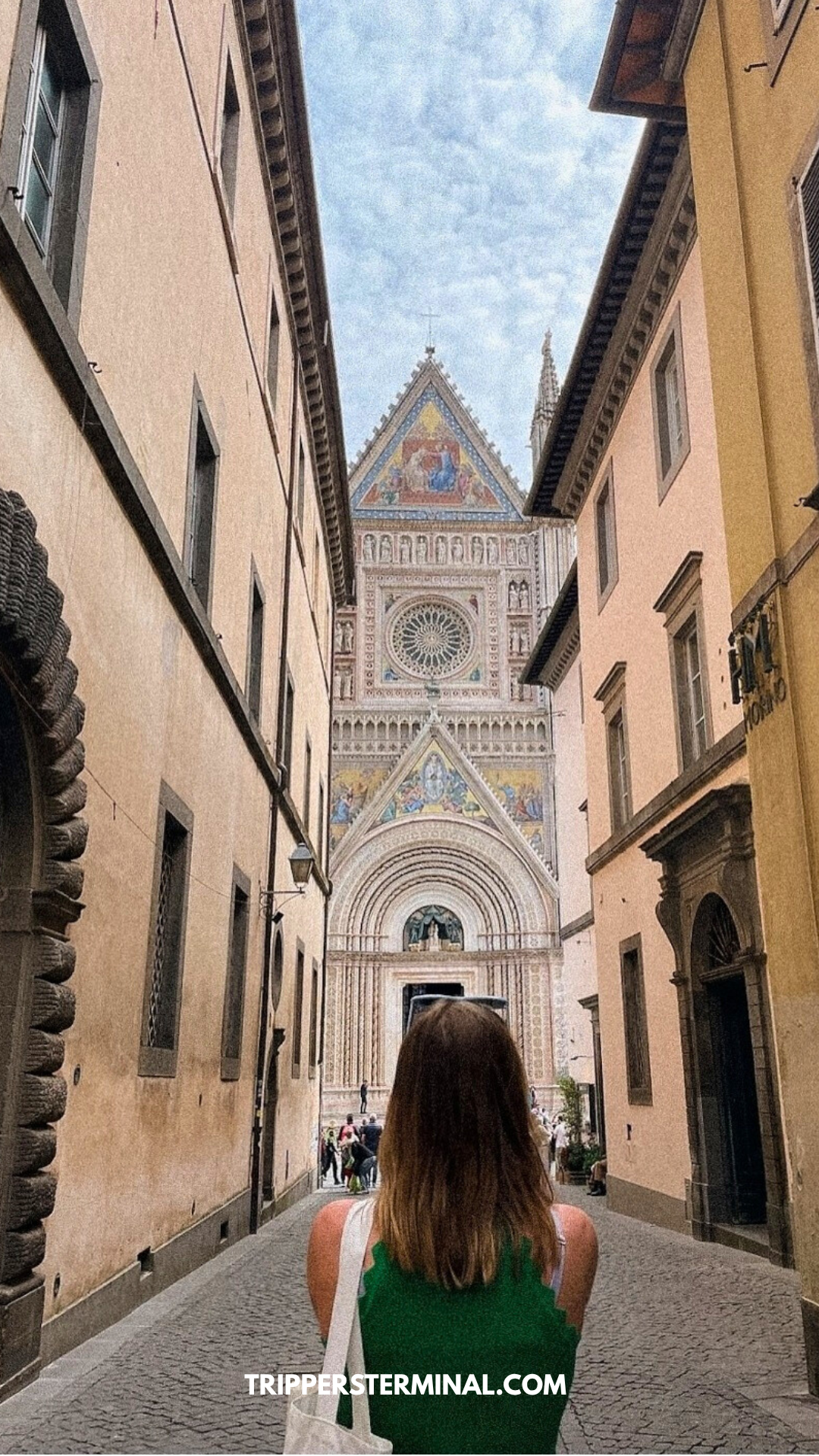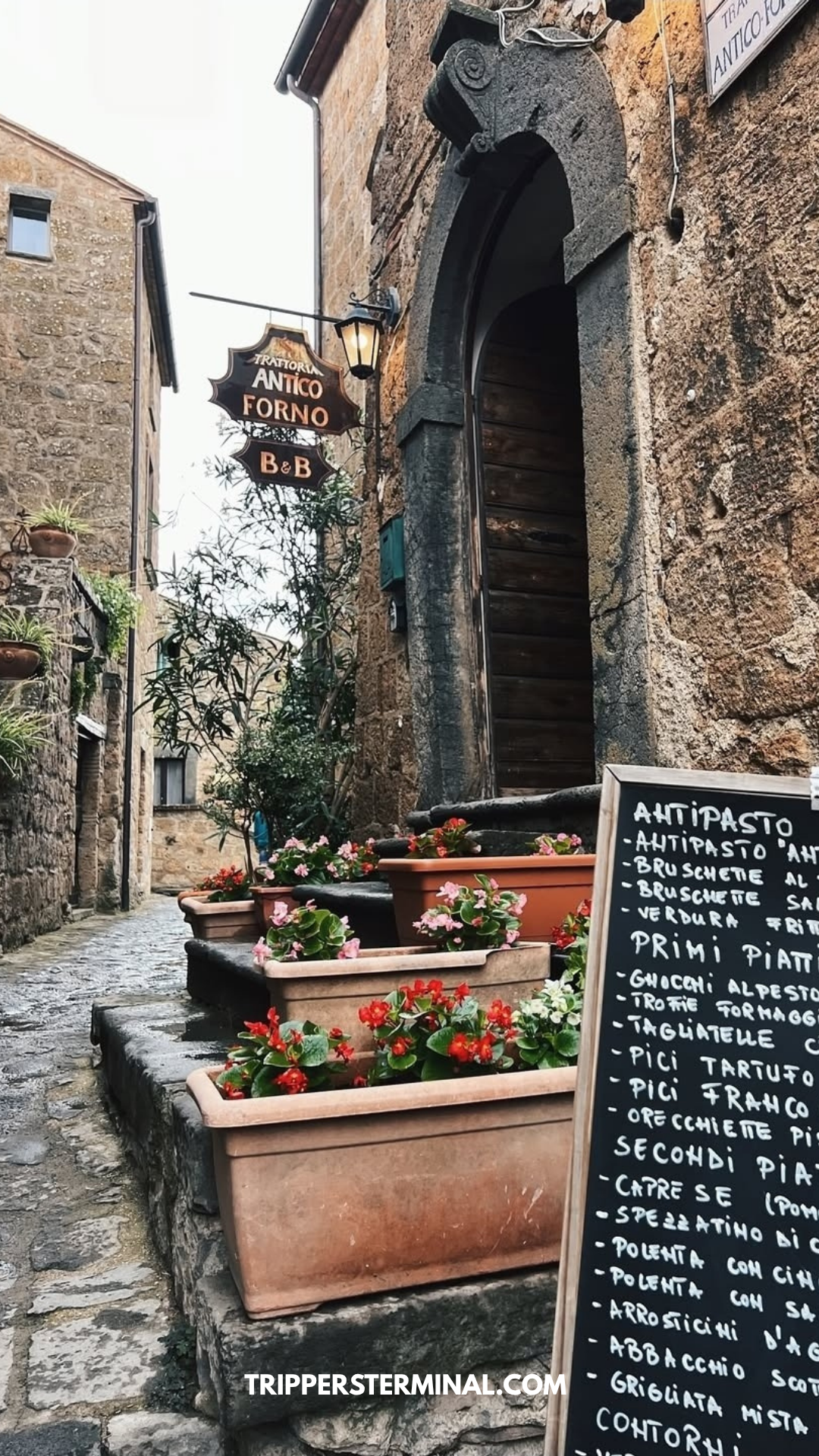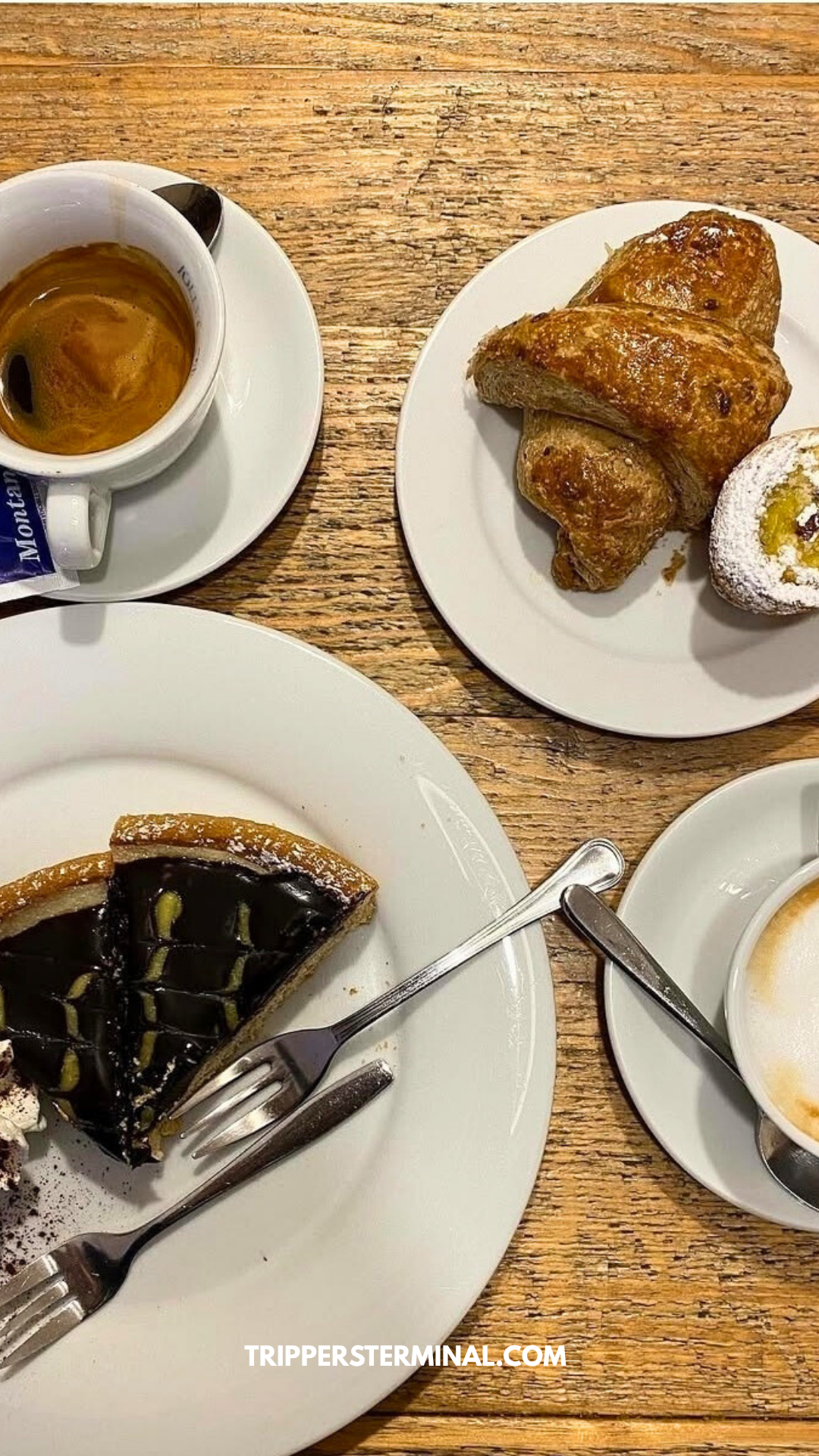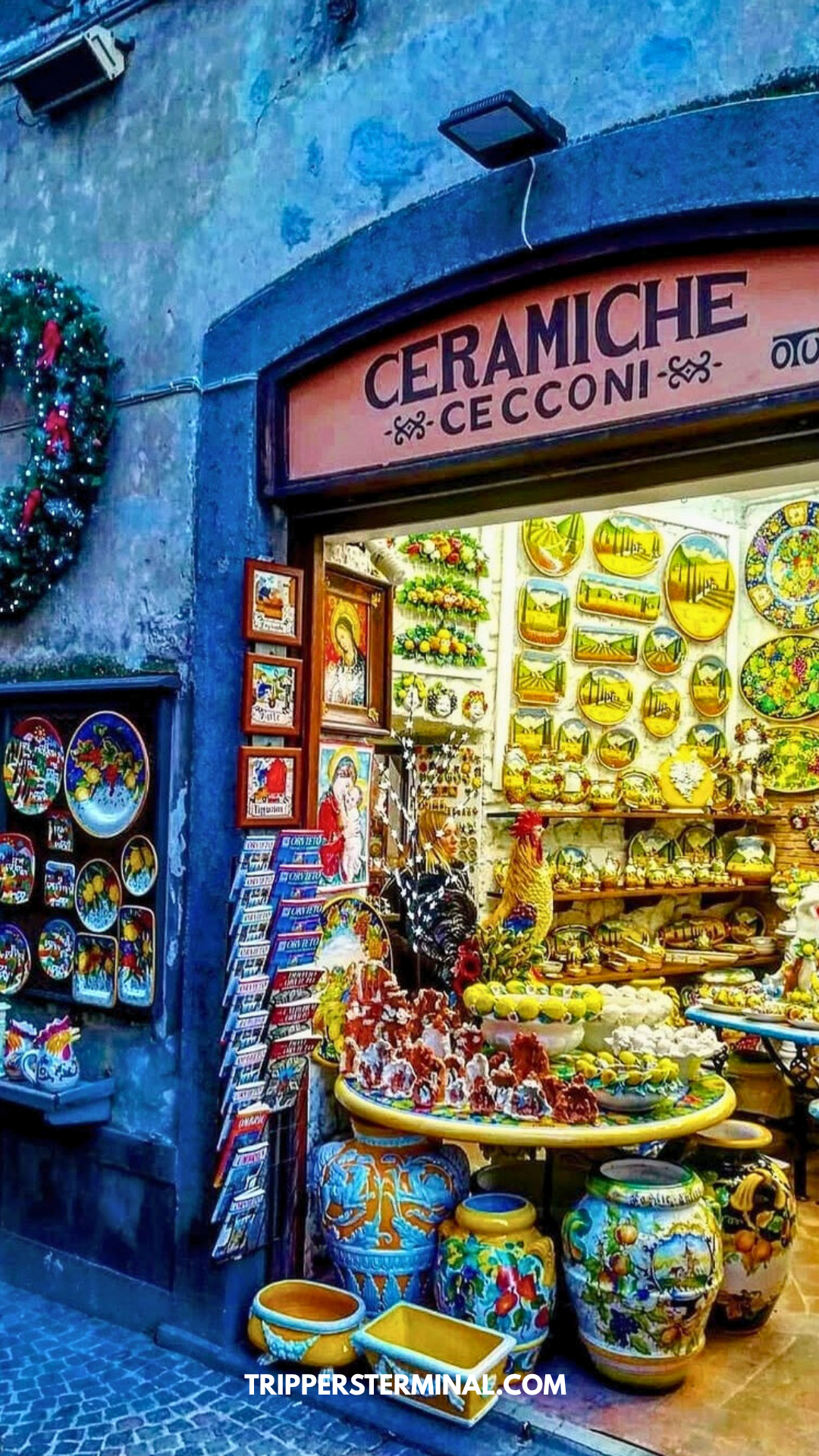Peaceful Italian Weekend: Two Hilltop Towns for Solo Travel (No Car Needed)
There’s a certain kind of weekend that calls for something quiet. No museums to rush through, no set times you have to be anywhere, no rental car to navigate down hairpin bends. Just you, a small bag, a train ticket in your pocket, and the promise of a slow Italian town waiting at the other end.
If that sounds like your pace, Italy is full of possibilities - but for a weekend, you want somewhere easy to reach, small enough to feel familiar within hours, yet still rich with things to stumble across.
Italy has hundreds of hill towns, but not all are easy for solo travelers without a car. Some are too far from train stations, others turn into tourist funnels during the day. The sweet spot is somewhere small but not empty, authentic but still reachable by public transport, with enough cafés and trattorias that you never feel awkward dining alone.
For me, that sweet spot is Orvieto and Civita di Bagnoregio: two places that can turn a regular weekend into something quietly unforgettable.
Getting There
Your weekend starts in Rome, because it’s the easiest hub for flights and onward trains. From Roma Termini, hop on a regional train to Orvieto. They run at least once an hour, take just over an hour, and cost €9–€12. No need to book far ahead - just check the Trenitalia app for times.
Best seat: Sit on the right-hand side heading north. The first part of the trip passes Rome’s suburbs, but soon you’ll see green rolling hills and scattered stone farmhouses. You don’t see Orvieto right away. The train winds through gentle green hills, then a flat stretch about 10 minutes before arrival, and you start to wonder if you’re even in the right place. And then - there it is. A whole medieval town sitting high on a cliff of warm golden rock, like it’s been quietly watching over the valley for centuries.
The train station is at the base of the hill. Directly opposite, you’ll spot the funicular station. This short, steep ride (just over 2 minutes, €1.30) is like being lifted into another world. As you climb, vineyards and olive groves spread below you, and the medieval walls rise closer and closer.
At the top, you’ll arrive at Piazza Cahen: the gateway to the old town. From here, it’s a 10–15 minute stroll into the historic centre along Via Garibaldi, with plenty of spots to stop for a first espresso.
Orvieto is small enough that you can walk everywhere, but big enough that you’ll keep finding little surprises — a pottery shop with hand‑painted tiles stacked in the window, a café with three tiny tables and a grumpy‑looking cat that doesn’t actually mind you at all, a quiet lane where the laundry hangs like bunting.
Your First Afternoon in Orvieto
Drop your bag at your guesthouse and head straight to Caffè Montanucci which is part café, part pasticceria, part local institution. Order a cappuccino and a slice of their torta, and take a seat where you can watch the ebb and flow of local life.
From there, wander toward the Duomo. You can’t miss it: its striped marble façade catches the light like nothing else in town. Inside, make time for the Chapel of San Brizio, where Luca Signorelli’s frescoes are a full, almost overwhelming burst of Renaissance colour.
For lunch, Trattoria del Moro Aronne is the kind of place that welcomes solo diners without fuss. Order the umbrichelli al tartufo (thick, chewy handmade pasta with truffle) and a glass of Orvieto Classico - a crisp local white that pairs beautifully with almost everything here.
In the afternoon, join one of the Underground Orvieto tours. You’ll wind through ancient caves, wells, and narrow tunnels carved deep into the tufa rock - some dating back to Etruscan times. It’s short, but it gives you a fascinating sense of the layers this town sits on.
As the sun dips lower, climb the Torre del Moro. The 360° view takes in a sea of terracotta rooftops and rolling green hills that seem to go on forever. Stunning!
Dinner? Try Il Malandrino Bistrot. Low lighting, relaxed atmosphere, and small tables perfect for solo dining. Order whatever pasta special they have that night (they’re all good) and let the owner guide your wine choice.
Afterwards, stroll. Orvieto at night is peaceful in a way few towns are. Lantern-lit streets, quiet piazzas, and the occasional cat darting across the cobbles. No need to rush back to your room.
Day 2: Civita di Bagnoregio Day Trip
The next morning, head to Civita di Bagnoregio. The journey’s easy: catch a Cotral bus from Orvieto (it takes about 45 minutes), and you’ll be dropped near the entrance to the pedestrian bridge that leads into town.
From a distance, Civita looks like a painting - a cluster of stone buildings balanced on a hill, surrounded by green valleys. The walk across the bridge is gently uphill, but you’ll barely notice because you’ll be stopping every few steps for another photo.
Once inside the old gate, the pace slows. Civita has no cars and no real “main street” - just a tangle of lanes that lead to tiny piazzas, hidden gardens, and quiet corners where the only sound is the wind. It’s worth stepping into Antico Forno for their thick bruschetta and a glass of local wine, then carrying on to the edge of town where you can look down at the valley and see just how dramatic its setting really is.
The whole place has a fragile beauty. Erosion has been eating away at the cliff for centuries, which is why Civita is sometimes called La città che muore: the dying city. But for now, it’s very much alive, and visiting feels like being let in on a secret.
You don’t need more than half a day here, which leaves time to head back to Orvieto for a relaxed afternoon.
Slow Afternoons in Orvieto
Back in Orvieto, afternoons aren’t for rushing. They’re for drifting. The town naturally slows down after lunch: shutters close, shopkeepers step away for a coffee, and the streets fall into that easy Umbrian rhythm where nobody is in a hurry.
If you’re curious about what lies beneath your feet, the Orvieto Underground tour is an excellent way to spend an hour or so. Led by local guides, you’ll wander through a hidden network of Etruscan tunnels, medieval cellars, and even old olive presses carved directly into the rock. Some of these passageways date back over 2,500 years, and the guides have a knack for mixing history with little human stories - like how families once used these underground spaces to store wine because the constant temperature kept it perfectly cool. It’s the kind of experience that makes you feel more connected to the town, knowing how much of its life has happened out of sight.
If you’d rather stay above ground, claim a seat at Caffè Montanucci or Bar Montanucci (two sides of the same beloved institution) - it’s worth going here more than once… and order a coffee or a spritz. Orvieto is a rare place where you can sit alone at a café without feeling like you’re “alone” - someone will probably greet you with a smile, a nod, or even a few words in Italian. From a little table on Corso Cavour, you can watch everything from schoolkids kicking a football to shopkeepers arranging fresh flowers outside their doors.
For something sweet, don’t skip the crostata di marmellata (a simple jam tart) or torcolo di San Valentino, a dense, fragrant cake with almonds, pine nuts, and raisins. These aren’t flashy desserts, but they’re comforting and yummy, the kind of thing grandmothers still make for Sunday gatherings.
Orvieto is also known for its ceramics tradition, which is small but high‑quality. You’ll find tiny artisan workshops tucked into narrow lanes, their shelves stacked with hand‑painted plates, bowls, and vases in sunny yellows, deep blues, and leafy greens. These aren’t mass‑produced souvenirs: each one is slightly different, a reflection of the person who painted it.
And if you’re in the mood for something quieter still, wander over to the Giardini Comunali (Orvieto’s public gardens) at the edge of the cliff. From here, the valley spreads out below you in a patchwork of vineyards and olive groves. It’s one of the best free views in town, and there’s almost always a shady bench to be found. Bring a book, or just sit and watch the light shift over the hills until the bells start ringing for evening Mass.
In Orvieto, afternoons like this have a way of stretching. One coffee turns into two kind of vibe. A quick wander becomes an hour. And before you know it, the sun is low and the streets start to hum again as locals come out for their early evening passeggiata - the slow, social walk that marks the end of the day. Love that.
Where to Stay in Orvieto
One of the nicest things about Orvieto is that you don’t have to choose between convenience and charm. The town is small enough that most places to stay put you within walking distance of the Duomo, cafés, and little backstreets where you’ll want to wander. As a solo traveler, the right base makes all the difference. You want somewhere where you feel comfortable returning at night, a place where the hosts remember your name, and ideally, somewhere that’s an easy stroll back from dinner so you’re not navigating dark alleyways alone.
B&B La Magnolia is one of those rare finds. Tucked just a couple of minutes from the Duomo, it’s small and friendly. The kind of place where the owners greet you like an old friend, even if it’s your first time. Mornings start with a proper Italian breakfast (coffee that’s strong enough to wake the cobblestones, warm pastries, and seasonal fruit), served either in a little breakfast room or out in their courtyard when the weather’s good. The rooms are simple but full of character, and there’s something reassuring about knowing that if you have a question (where to find the best gelato, which café is quietest for reading) someone at the front desk will have a thoughtful, genuinely local answer.
If you prefer something with a little more polish, Hotel Palazzo Piccolomini is a must stay. It’s a boutique hotel in a 16th‑century palazzo! It’s elegant without being intimidating, with high ceilings, soft lighting, and just the right mix of old‑world charm and modern touches (good showers, reliable Wi‑Fi, and plenty of plugs for charging devices - solo traveler priorities). It’s the kind of place where you can happily spend an evening curled up in your room with a glass of Orvieto Classico and a book, listening to the murmur of the town outside your window. And because it’s set slightly away from the main tourist path, nights are quiet.
Wherever you stay, keep in mind that Orvieto is divided into two parts: the historic town at the top of the hill (where you want to be) and the modern town below. If you’re arriving by train, you’ll come into the lower part, but there’s a quick funicular that whisks you up to the old town in just a couple of minutes. Staying up top means you can step outside your door and instantly be surrounded by history, rather than factoring in an uphill commute every day.
For solo travelers, that’s the real magic: waking up in a place where the streets are quiet in the morning, the bells start ringing as you sip your first coffee, and the whole of Orvieto is right at your feet.
Time to leave
By Sunday, you’ll know your way around without looking at a map. You’ll have a go‑to coffee spot, a favourite table for lunch, and a mental note of the side streets that are quieter than the main square.
It’s an easy place for a solo trip. Everything’s walkable, you feel safe moving around at any time of day, and you can fill your time without trying too hard. Maybe you’ll spend an hour in a ceramics shop talking to the owner, or take a detour just to look at the view again.
When it’s time to leave, it doesn’t feel like you’ve “done” Orvieto - it feels like you’ve simply been part of it for a couple of days. And that’s why we love it. You can drop in for a weekend and settle straight into the rhythm, then leave knowing it’ll be just as easy to come back next time.
You May Also Like…
Solo Travel Destinations in Europe for Slow Travel
Looking for peaceful corners of Europe where you can truly switch off? This guide takes you beyond the obvious, into charming towns and quiet countryside spots perfect for solo wanderers who value space, slower mornings, and unhurried afternoons.
Bordeaux for Solo Travellers: Hidden Gems, Peaceful Wine Tastings & Mindful Exploration
Forget the big bus wine tours — this Bordeaux guide is all about slow sips, tucked‑away vineyards, and historic streets where you can explore at your own pace. Perfect for solo travellers who want a softer, less touristy take on France’s wine capital.
Solo Travel Europe Countryside Summer Guide
Swap crowded city squares for lavender fields, quiet lakes, and sleepy rural villages. This summer countryside guide is packed with easy‑to‑reach destinations where solo travellers can enjoy warm days and long, golden evenings.
Solo Travel in Southern France
From pastel‑washed fishing villages to breezy hilltop towns, Southern France has a way of making solo travel feel like second nature. This guide takes you to its quieter corners, where life moves slowly and the views seem to stretch forever.
FAQ: Weekend in Orvieto & Civita di Bagnoregio for Solo Travellers
Is Orvieto worth visiting for a weekend?
Yes. Orvieto is small enough to explore in two days but packed with history, food, and character. It’s a relaxed, walkable town where you can enjoy the Duomo, underground Etruscan tunnels, and long, unhurried meals without the stress of a busy itinerary.
How do you get to Orvieto without a car?
From Rome, it’s about 1 hour 15 minutes on a direct regional train. From Florence, about 2 hours with one easy change in Chiusi. The station is at the bottom of the hill - just take the funicular up to the old town in a few minutes.
Is Orvieto safe for solo travellers?
Yes. The old town is compact and safe, even in the evenings. People are friendly without being pushy, making it a comfortable destination for solo travellers.
What is Orvieto known for?
Its Gothic cathedral, panoramic views over the Umbrian countryside, intricate Etruscan history, and its white Orvieto Classico wine. It’s also a ceramics hub, with hand‑painted pottery in deep blues and sunny yellows.
How much time do you need in Orvieto?
Two days is ideal, especially if you want to explore at a slow pace. You can combine sightseeing with lazy afternoons in wine bars or exploring shops.
Is Civita di Bagnoregio worth visiting?
Yes, it’s one of the most striking villages in Italy. Perched on a crumbling cliff and only reachable by footbridge, it feels frozen in time. The quiet cobbled lanes and sweeping views make it a great half‑day trip from Orvieto.
How do you get from Orvieto to Civita di Bagnoregio without a car?
There’s no direct train, but you can get there by bus in around 45–60 minutes. Take the Cotral bus from Orvieto to Bagnoregio, then walk the pedestrian bridge into Civita. Some visitors also take a short taxi ride from Orvieto if they’re pressed for time.
How long should you spend in Civita di Bagnoregio?
A few hours is enough to wander the streets, visit small museums, enjoy a long lunch, and soak in the views.
When is the best time to visit Civita di Bagnoregio?
Spring and early autumn are best for mild weather and fewer day‑trippers. Go in the morning or late afternoon to enjoy quieter streets.
What to eat in Civita di Bagnoregio?
Look for pappardelle al cinghiale (wide pasta with wild boar sauce), local pecorino cheese, and traditional almond biscuits. Many restaurants here have terrace views, so it’s worth lingering over a meal.


